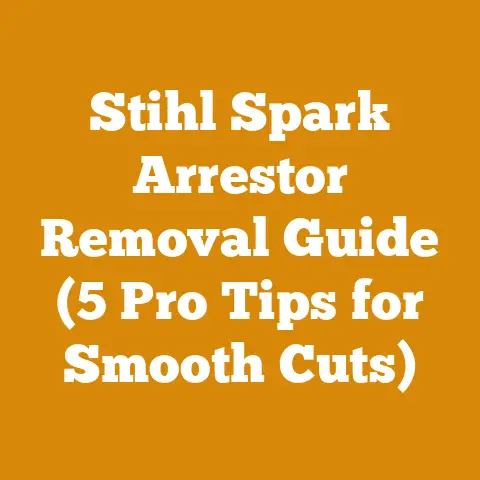Cedar Finish Tips: Best Clear Coatings for Wood Protection (Pro Guide)
Alright, buckle up, buttercups! Ever tried explaining to a cedar tree that it needs to look even more stunning? Yeah, that’s what we’re diving into today. Finishing cedar is like trying to convince a supermodel to wear makeup – they’re already gorgeous, but the right touch can make ’em legendary.
Cedar Finish Tips: Best Clear Coatings for Wood Protection (Pro Guide)
I’m here to arm you with everything you need to protect and enhance that beautiful cedar with the perfect clear coat. We’re talking longevity, aesthetics, and avoiding the dreaded “orange peel” effect. Let’s get cracking!
Understanding the Allure of Cedar
Cedar isn’t just any wood; it’s practically royalty in the lumber kingdom. I remember the first time I ever smelled freshly cut cedar – it was like walking into a spice cabinet mixed with a forest. That aromatic quality comes from its natural oils, which also make it naturally resistant to rot, insects, and the general nastiness that plagues other types of wood.
-
Why Cedar is Special:
- Natural Resistance: Those oils I mentioned? They’re like cedar’s personal bodyguards against decay.
- Dimensional Stability: It doesn’t warp and twist as much as other woods, which is a HUGE plus for outdoor projects.
- Aesthetic Appeal: That reddish-brown hue and tight grain? Chef’s kiss!
-
Common Applications:
- Siding: Cedar siding is a classic for a reason – it looks fantastic and lasts a lifetime with proper care.
- Decks: Nothing beats the feel of a cedar deck under your bare feet on a summer evening.
- Fences: A cedar fence not only looks great but also provides privacy and security.
- Interior Paneling: Think saunas, closets, or accent walls – cedar adds warmth and a touch of luxury.
Why Clear Coating Cedar is Crucial
“But it’s already rot-resistant!” I hear you cry. And you’re right, to an extent. However, even cedar needs a little help to reach its full potential. Think of it as sunscreen for wood – it protects against the sun’s harmful UV rays, which can cause fading and discoloration.
-
Protection Against UV Damage: The sun is cedar’s biggest enemy. UV rays break down the lignin in the wood, causing it to turn gray and lose its color. A clear coat acts as a barrier, slowing down this process.
-
Preventing Moisture Intrusion: While cedar is naturally water-resistant, it’s not waterproof. Excessive moisture can still lead to warping, cracking, and even rot over time. A good clear coat seals the wood, preventing water from seeping in.
-
Enhancing Aesthetic Appeal: A clear coat can bring out the natural beauty of cedar, highlighting its grain and color. It can also add a subtle sheen, giving the wood a richer, more luxurious look.
Choosing the Right Clear Coat: A Deep Dive
Okay, here’s where things get interesting. The world of clear coats is vast and confusing, with options ranging from water-based acrylics to oil-based polyurethanes. Choosing the right one depends on your project, your budget, and your personal preferences.
-
Understanding Different Types of Clear Coats:
-
Water-Based Acrylics: These are low in VOCs (volatile organic compounds), making them a more environmentally friendly option. They dry quickly, are easy to clean up, and offer good UV protection. However, they may not be as durable as oil-based finishes. I once used a water-based acrylic on a cedar birdhouse, and it held up beautifully for years, even in harsh weather.
- Pros: Low VOCs, quick drying, easy cleanup, good UV protection.
- Cons: May not be as durable as oil-based finishes.
- Best For: Outdoor furniture, birdhouses, interior projects.
-
Oil-Based Polyurethanes: These are known for their durability and water resistance. They provide a hard, protective finish that can withstand heavy use. However, they have higher VOCs, take longer to dry, and require mineral spirits for cleanup. I used an oil-based polyurethane on a cedar workbench, and it’s still going strong after years of spills, dents, and general abuse.
- Pros: Excellent durability, water resistance, and protection.
- Cons: High VOCs, slow drying, requires mineral spirits for cleanup.
- Best For: High-traffic areas, outdoor projects exposed to harsh weather.
-
Spar Urethanes: These are specifically designed for marine applications, meaning they can withstand constant exposure to water and sunlight. They are flexible, allowing the wood to expand and contract without cracking the finish. However, they are more expensive than other types of clear coats. I used a spar urethane on a cedar canoe I built, and it’s been paddling through lakes and rivers for years without any signs of wear.
- Pros: Excellent water resistance, flexibility, and UV protection.
- Cons: More expensive than other types of clear coats.
- Best For: Boats, docks, and other marine applications.
-
Penetrating Oil Finishes: These oils soak into the wood, enhancing its natural beauty and providing some protection from moisture. They are easy to apply and maintain, but they don’t offer the same level of protection as film-forming finishes like polyurethanes. I use a penetrating oil finish on my cedar garden beds to keep them looking healthy and vibrant.
- Pros: Easy to apply and maintain, enhances natural beauty.
- Cons: Less protection than film-forming finishes.
- Best For: Garden beds, interior paneling, and other projects where a natural look is desired.
-
-
Factors to Consider When Choosing:
- Location: Is your project indoors or outdoors? Outdoor projects require a more durable, weather-resistant finish.
- Exposure to Elements: Will your project be exposed to direct sunlight, rain, or saltwater? Choose a finish that can withstand these conditions.
- Desired Sheen: Do you want a glossy, satin, or matte finish? Different clear coats offer different levels of sheen.
- VOC Content: Are you concerned about VOCs? Choose a low-VOC water-based acrylic.
- Budget: Clear coats range in price from affordable to expensive. Consider your budget when making your decision.
-
My Top Picks for Cedar Clear Coats:
- For Outdoor Furniture: Minwax Helmsman Spar Urethane. It provides excellent UV protection and water resistance, and it’s relatively easy to apply.
- For Decks: Thompson’s WaterSeal Waterproofer Plus Clear Wood Protector. It’s a penetrating oil finish that protects against moisture and enhances the natural beauty of the wood.
- For Interior Paneling: General Finishes Arm-R-Seal Oil Based Topcoat. It’s a durable, oil-based polyurethane that provides a beautiful, long-lasting finish.
Preparing Cedar for Clear Coating: The Foundation for Success
Like any good project, a flawless finish starts with proper preparation. Think of it as laying the groundwork for a masterpiece. Skimp on this step, and you’ll regret it later. I learned this the hard way when I tried to rush a cedar fence project and ended up with a peeling, uneven finish.
-
Cleaning the Wood:
- Removing Dirt and Debris: Use a stiff brush or a vacuum to remove any dirt, dust, or debris from the surface of the wood.
- Washing with Soap and Water: For heavily soiled wood, wash it with a mild soap and water solution. Rinse thoroughly and allow the wood to dry completely.
- Using a Wood Cleaner: For stubborn stains or mildew, use a specialized wood cleaner. Follow the manufacturer’s instructions carefully.
-
Sanding the Surface:
- Why Sanding is Important: Sanding creates a smooth, even surface for the clear coat to adhere to. It also opens up the pores of the wood, allowing the finish to penetrate deeper.
- Choosing the Right Grit: Start with a coarser grit sandpaper (80-120) to remove any imperfections or rough spots. Then, move to a finer grit sandpaper (180-220) to smooth the surface.
- Sanding Techniques: Sand with the grain of the wood to avoid scratching. Use a sanding block or a power sander for larger surfaces.
- Dust Removal: After sanding, remove all dust with a tack cloth or a vacuum.
-
Addressing Imperfections:
- Filling Holes and Cracks: Use a wood filler to fill any holes, cracks, or knots in the wood. Allow the filler to dry completely and then sand it smooth.
- Removing Splinters: Use a utility knife or a chisel to remove any splinters from the surface of the wood.
- Dealing with Knots: Knots can be tricky to deal with. They may bleed sap or cause the finish to yellow. To prevent this, seal the knots with a shellac-based primer before applying the clear coat.
Applying the Clear Coat: Techniques and Tips
Now for the main event! Applying the clear coat is where your patience and attention to detail will pay off. Remember, slow and steady wins the race. I’ve seen too many people rush this step and end up with drips, runs, and an overall messy finish.
-
Choosing the Right Tools:
- Brushes: Use a high-quality brush with natural or synthetic bristles. Natural bristles are best for oil-based finishes, while synthetic bristles are best for water-based finishes.
- Rollers: Use a foam roller for large, flat surfaces. Make sure the roller is compatible with the type of clear coat you’re using.
- Sprayers: A sprayer can provide a smooth, even finish, but it requires more skill and practice. Use an airless sprayer or an HVLP (high-volume, low-pressure) sprayer.
-
Application Techniques:
- Applying Thin Coats: Apply thin, even coats of clear coat, allowing each coat to dry completely before applying the next. Multiple thin coats are better than one thick coat, which can lead to drips and runs.
- Maintaining a Wet Edge: Overlap each stroke slightly to maintain a wet edge and prevent lap marks.
- Avoiding Drips and Runs: If you see any drips or runs, brush them out immediately.
- Sanding Between Coats: Lightly sand between coats with a fine-grit sandpaper (220-320) to remove any imperfections and create a smooth surface for the next coat.
-
Drying Times and Conditions:
- Following Manufacturer’s Instructions: Always follow the manufacturer’s instructions for drying times and conditions.
- Temperature and Humidity: Temperature and humidity can affect drying times. Ideal conditions are a temperature of 65-75°F and a humidity level of 50-70%.
- Proper Ventilation: Ensure proper ventilation to allow the clear coat to dry properly.
-
Troubleshooting Common Problems:
- Drips and Runs: Brush out drips and runs immediately. If they dry, sand them smooth and apply another coat.
- Bubbles: Bubbles can be caused by improper mixing or application. To prevent bubbles, stir the clear coat gently and avoid shaking it.
- Orange Peel: Orange peel is a textured finish that resembles the surface of an orange. It can be caused by applying the clear coat too thick or by using a low-quality sprayer. To fix orange peel, sand the surface smooth and apply another coat using a higher-quality sprayer.
- Yellowing: Some clear coats can yellow over time, especially oil-based finishes. To prevent yellowing, use a UV-resistant clear coat.
Maintaining Your Cedar Finish: Keeping it Looking its Best
Congratulations! You’ve successfully applied a clear coat to your cedar project. But the work doesn’t stop there. To keep your cedar looking its best, you need to maintain the finish properly. Think of it as giving your cedar a regular spa day.
-
Regular Cleaning:
- Dusting and Wiping: Dust and wipe down your cedar project regularly with a soft cloth.
- Washing with Mild Soap and Water: For heavier cleaning, wash the cedar with a mild soap and water solution. Rinse thoroughly and allow it to dry completely.
-
Inspecting for Damage:
- Checking for Cracks and Peeling: Inspect your cedar project regularly for cracks, peeling, or other signs of damage.
- Addressing Problems Promptly: Address any problems promptly to prevent them from getting worse.
-
Reapplication of Clear Coat:
- When to Reapply: Reapply the clear coat every 1-3 years, depending on the type of finish and the exposure to the elements.
- Preparing the Surface: Before reapplying the clear coat, clean and sand the surface as described in the “Preparing Cedar for Clear Coating” section.
- Following Application Techniques: Follow the application techniques described in the “Applying the Clear Coat” section.
Cedar Finishing: Advanced Techniques and Considerations
Ready to take your cedar finishing skills to the next level? Here are some advanced techniques and considerations to help you achieve professional-quality results.
-
Tinting Clear Coats:
- Adding Color to Your Finish: Tinting clear coats allows you to add color to your finish while still allowing the natural beauty of the wood to show through.
- Choosing the Right Tint: Use a universal tint that is compatible with the type of clear coat you’re using.
- Mixing the Tint: Add the tint to the clear coat gradually, stirring constantly until you achieve the desired color.
-
Using Sealers and Primers:
- Sealing the Wood: Sealers can be used to seal the wood and prevent the clear coat from penetrating too deeply. This can help to create a more even finish.
- Priming the Wood: Primers can be used to prime the wood and improve the adhesion of the clear coat. This is especially important for woods that are oily or resinous, like cedar.
-
Spraying Techniques for Professional Results:
- Setting Up Your Sprayer: Set up your sprayer according to the manufacturer’s instructions.
- Adjusting the Pressure: Adjust the pressure to achieve a fine, even spray.
- Maintaining a Consistent Distance: Maintain a consistent distance from the surface of the wood.
- Overlapping Each Stroke: Overlap each stroke slightly to prevent streaks.
Safety First: Protecting Yourself During the Finishing Process
Safety should always be your top priority when working with clear coats and other finishing products. I’ve seen too many accidents happen because people didn’t take the proper precautions.
-
Ventilation:
- Working in a Well-Ventilated Area: Always work in a well-ventilated area to avoid inhaling harmful fumes.
- Using a Respirator: Wear a respirator to protect your lungs from VOCs.
-
Protective Gear:
- Wearing Gloves: Wear gloves to protect your skin from contact with clear coats and other finishing products.
- Wearing Eye Protection: Wear eye protection to protect your eyes from splashes and fumes.
-
Proper Disposal of Materials:
- Disposing of Rags and Brushes: Dispose of rags and brushes properly to prevent fires.
- Recycling or Disposing of Empty Cans: Recycle or dispose of empty cans according to local regulations.
Case Studies: Cedar Finishing Success Stories
Let’s take a look at some real-world examples of successful cedar finishing projects. These case studies will illustrate the principles we’ve discussed and provide inspiration for your own projects.
-
Case Study 1: Restoring a Weathered Cedar Deck
- The Challenge: A cedar deck was weathered and gray after years of exposure to the elements.
- The Solution: The deck was cleaned, sanded, and treated with a penetrating oil finish.
- The Results: The deck was restored to its original beauty and protected from further damage.
-
Case Study 2: Building a Cedar Sauna
- The Challenge: A cedar sauna needed a durable, water-resistant finish that could withstand high temperatures and humidity.
- The Solution: The sauna was treated with a spar urethane finish.
- The Results: The sauna was protected from moisture and heat, and the finish enhanced the natural beauty of the cedar.
-
Case Study 3: Creating a Cedar Accent Wall
- The Challenge: A cedar accent wall needed a clear coat that would enhance its natural beauty and provide some protection from scratches and dents.
- The Solution: The wall was treated with a water-based acrylic finish.
- The Results: The wall looked stunning, and the finish provided a durable, easy-to-clean surface.
Conclusion: The Art and Science of Cedar Finishing
Finishing cedar is both an art and a science. It requires knowledge, skill, and a healthy dose of patience. But the rewards are well worth the effort. A properly finished cedar project will not only look beautiful but will also last for years to come.
Remember, the key to success is to choose the right clear coat, prepare the surface properly, apply the finish carefully, and maintain it regularly. And don’t be afraid to experiment and try new techniques. The more you practice, the better you’ll become.
So go forth and transform that cedar into a masterpiece! And remember, if you ever find yourself struggling, don’t hesitate to reach out for help. There’s a whole community of woodworkers out there who are eager to share their knowledge and experience.






